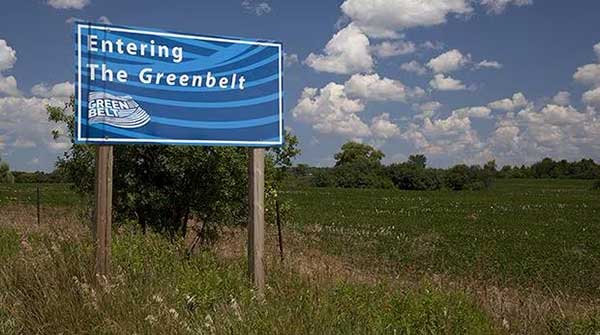The Greenbelt should remain inviolate, without exception or compromise
 It’s inspiring to see farmland management taking the forefront in today’s headlines, emerging as a significant political issue in Canada’s largest province – a truly fascinating development.
It’s inspiring to see farmland management taking the forefront in today’s headlines, emerging as a significant political issue in Canada’s largest province – a truly fascinating development.
In a world grappling with the massive challenge of feeding a growing population amidst rising urbanization and environmental pressures, preserving farmland close to cities has become more important than ever. Amid recent political controversies at Queen’s Park, the Greenbelt shines as a beacon of hope – a policy firmly opposed to relentless urban sprawl. It not only preserves nearby agriculture but also bolsters our food security.
A bit of history: In 2005, under the leadership of Dalton McGuinty, the Liberal government took a momentous step by enacting legislation to create the world’s largest Greenbelt. Encompassing the Niagara Escarpment, the Oak Ridges Moraine, and nearly one million acres of prime farmland, it now blankets over two million acres of fertile land. Over the years, its effectiveness in protecting farmland has been consistently demonstrated. A study by the Ontario Ministry of Agriculture, Food, and Rural Affairs underscores the undeniable impact of the Greenbelt in preserving prime agricultural land.
 Photo courtesy Friends of the Greenbelt |
| Related Stories |
| Farmers are partnering with investors to bolster the agricultural sector
|
| Are some cows better at weathering climate change?
|
| Ottawa tone deaf to issues facing farmers
|
| Keep an Eye on Ontario |
The results of this study, released a few years ago, are both enlightening and profound. From 2005 to 2019, only 32 hectares of prime agricultural land were lost within the protective embrace of the Greenbelt. This seemingly small figure takes on immense significance when compared with the staggering loss of 11,172 hectares of prime agricultural land outside the Greenbelt during the same period. The data unequivocally reaffirms the Greenbelt’s fundamental mission: safeguarding agricultural land and preserving natural features.
Regardless of any narrative spun by the Ford government regarding land protection and any purported compromises involving prime farmland, one unassailable truth remains – the Greenbelt should remain inviolate, without exception or compromise.
Other urban centres in Canada have paid a steep price for unchecked urban sprawl. Take the example of the island of Montreal, where some of Quebec’s most fertile agricultural land now lies beneath asphalt and concrete. Ontario cannot afford to repeat such a blunder.
Preserving the Greenbelt isn’t just about resisting urban renewal and development; it’s about finding space in the real estate sector. Today, we have the opportunity to expand residential areas while simultaneously safeguarding our capacity for food production and farming.
Well-planned public transportation and communication networks can facilitate urban development while keeping the Greenbelt intact. Preserving the Greenbelt also offers urbanites the prospect of agricultural proximity.
Preserving is not just about food security; it’s very much about education and our collective awareness of food production. The stark rural-urban divide in Canada has led to misguided policies detrimental to farmers. This disconnect is further exacerbated by the fact that, according to Statistics Canada, 98.4 percent of Canadians do not reside on farms. Allowing urban residents to at least glimpse farmland is vital for fostering a connection between Canadians and farming. For many Ontarians, driving through the Greenbelt may be their sole opportunity to witness a working farm.
And let’s be honest. Preserving our biodiversity, especially near or within urban centres, can only benefit our collective mental health. Numerous studies have highlighted the importance of green spaces for our mental health.
In essence, the Greenbelt policy was not just a commendable idea; it was an imperative. It ensures the protection of green spaces near Canada’s most urbanized region. It is essential for food security, education, awareness, and the well-being of our society. These vital aspects should never be open to sacrifice.
Dr. Sylvain Charlebois is senior director of the agri-food analytics lab and a professor in food distribution and policy at Dalhousie University.
For interview requests, click here.
The opinions expressed by our columnists and contributors are theirs alone and do not inherently or expressly reflect the views of our publication.
© Troy Media
Troy Media is an editorial content provider to media outlets and its own hosted community news outlets across Canada.

